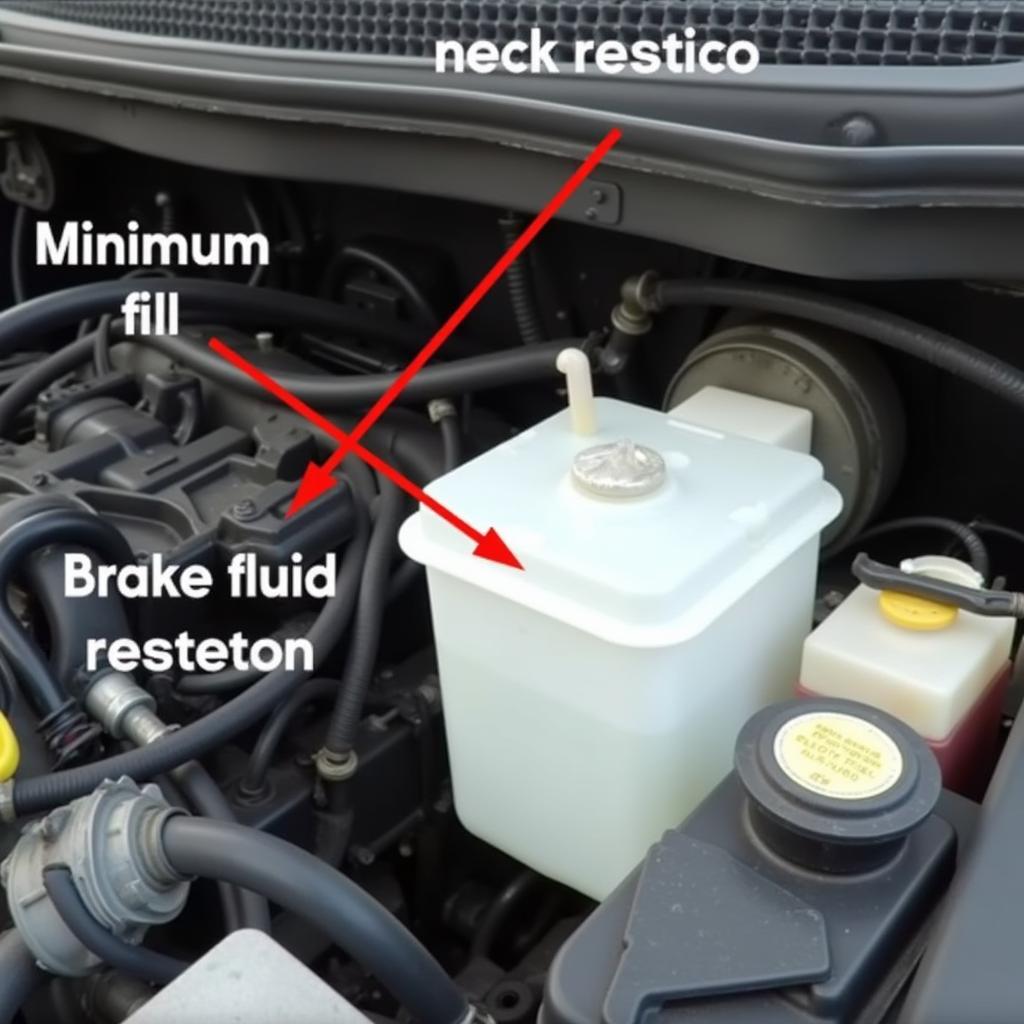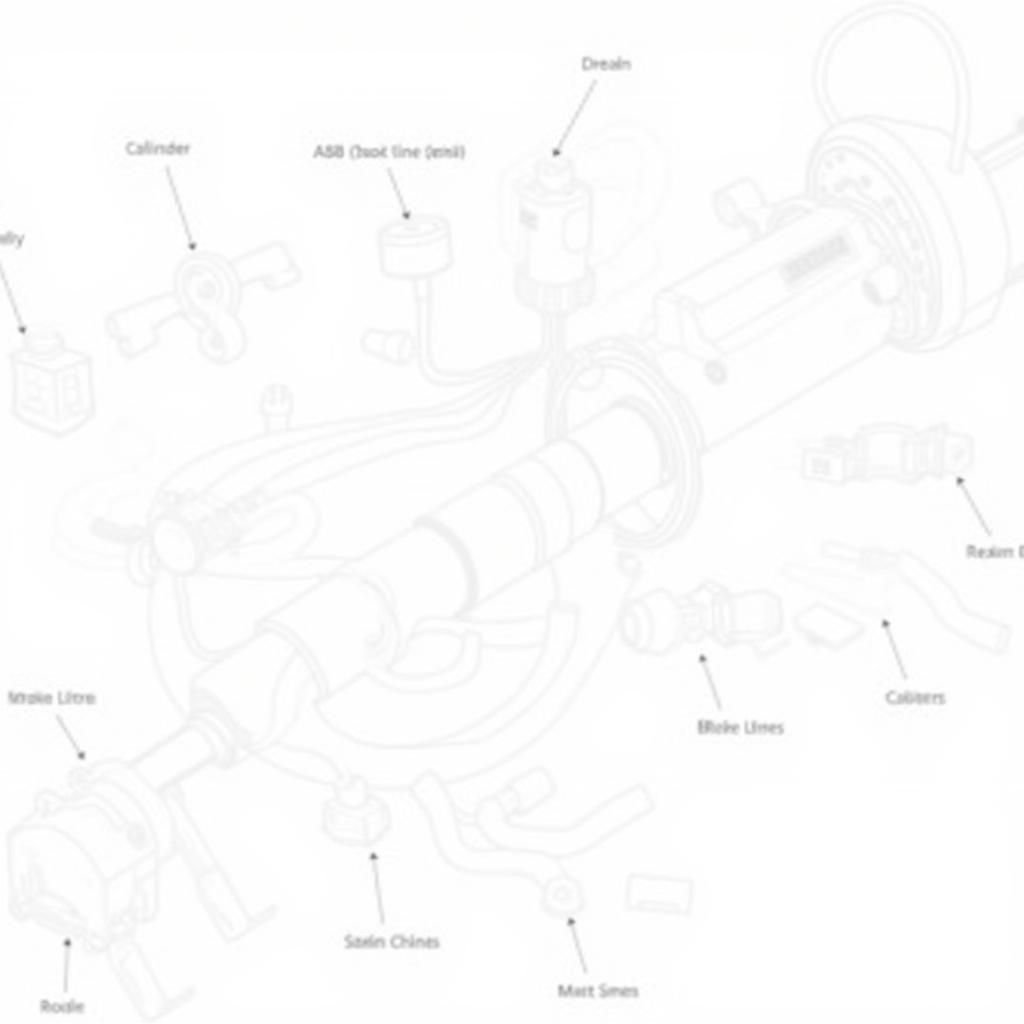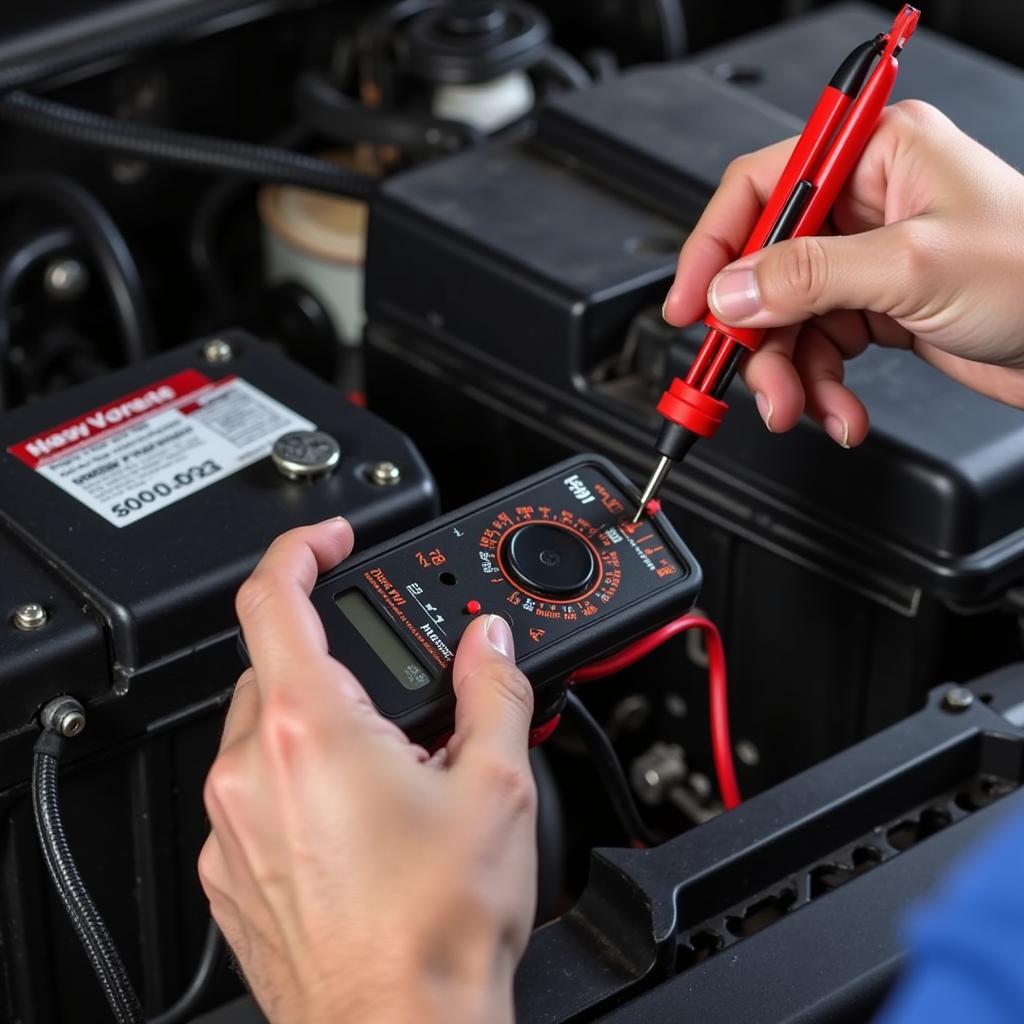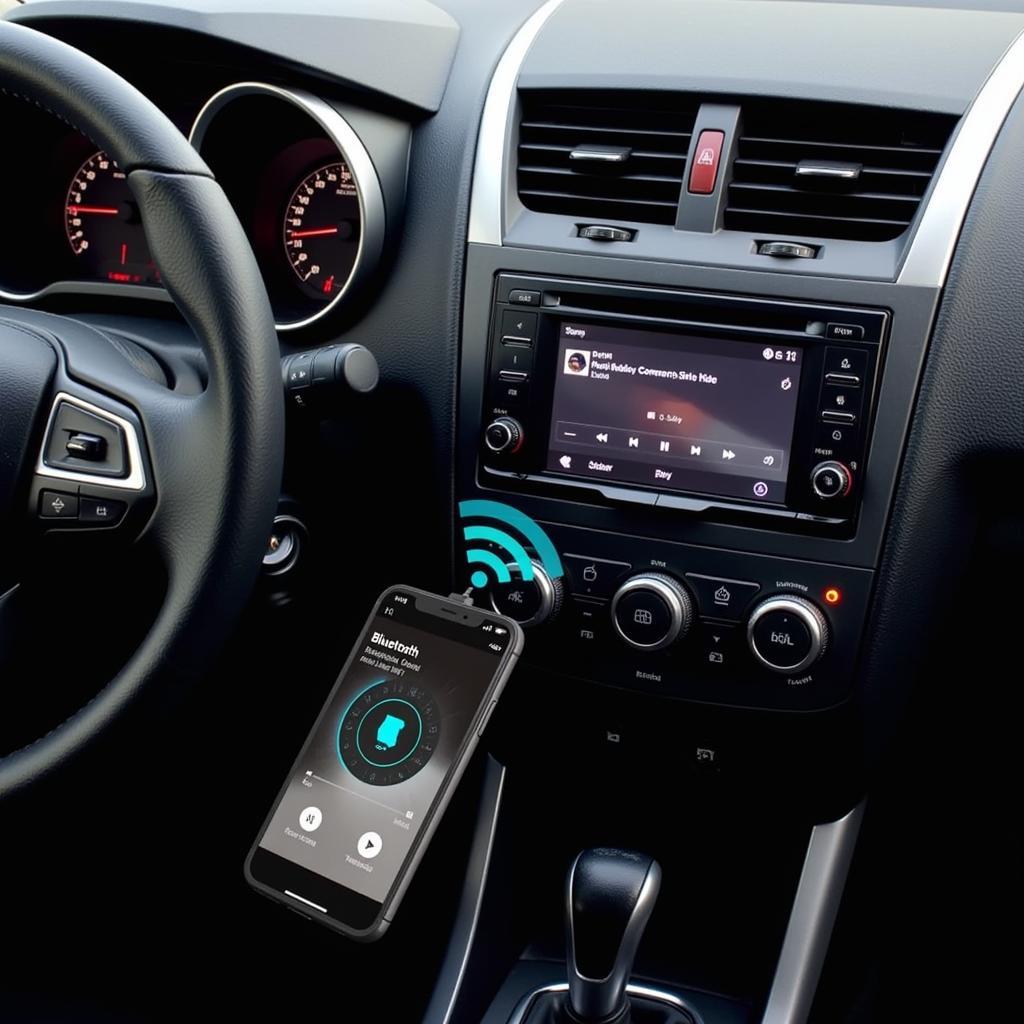The brake warning light on your 2005 Chevy Trailblazer is an essential safety feature. Ignoring it could lead to serious braking issues. This comprehensive guide explores the common causes of a lit brake light on a 2005 Trailblazer, providing troubleshooting steps and solutions, from simple checks to more advanced diagnostic techniques. We’ll cover everything from low brake fluid to potential ABS issues, empowering you to address the problem effectively.
If your brake warning light is on, don’t panic. It’s a signal to investigate and address a potential problem. Sometimes, the fix can be as simple as topping off your brake fluid. Other times, it might indicate a more complex issue requiring professional attention. This guide will help you determine the best course of action. For example, a consistently illuminated brake light could indicate worn brake pads, a malfunctioning brake light switch, or even problems with the ABS system.
Just as a flickering brake warning light might signify issues with the ABS system or low brake fluid, a solid brake warning light could mean worn brake pads or a problem with the parking brake. The 2005 Honda Accord brake warning light system is similar in function and can be diagnosed using similar methods.
This information is crucial for anyone experiencing similar issues with their Honda Accord.
Understanding Your Trailblazer’s Brake Warning Light
The brake warning light is designed to alert you to potential problems within your braking system. It’s not just about worn brake pads. It can also indicate low brake fluid, issues with the ABS (Anti-lock Braking System), or problems with the parking brake. Understanding what triggers the light is the first step to resolving the issue.
Common Causes of a Lit Brake Warning Light
Several factors can illuminate the brake warning light on your 2005 Chevy Trailblazer:
- Low Brake Fluid: This is often the most common culprit. As brake pads wear down, the brake fluid level naturally decreases. If it drops too low, the warning light will illuminate.
- Worn Brake Pads: Thin brake pads trigger the warning light, indicating the need for replacement.
- Faulty Brake Light Switch: This switch, located near the brake pedal, can malfunction, causing the brake lights to stay on or the warning light to illuminate.
- ABS Issues: Problems with the Anti-lock Braking System can trigger the warning light. This usually requires specialized diagnostic tools to pinpoint the specific issue.
- Parking Brake Engaged: Sometimes, simply disengaging the parking brake will resolve the issue.
 Checking the Brake Fluid Reservoir in a 2005 Chevy Trailblazer
Checking the Brake Fluid Reservoir in a 2005 Chevy Trailblazer
Troubleshooting the Brake Warning Light: A Step-by-Step Guide
Here’s a practical guide to help you troubleshoot your 2005 Chevy Trailblazer’s brake warning light:
- Check the Parking Brake: Ensure the parking brake is fully disengaged.
- Inspect the Brake Fluid Level: Locate the brake fluid reservoir under the hood and check the fluid level. If it’s low, add the correct type of brake fluid until it reaches the “MAX” line.
- Inspect the Brake Pads: Visually inspect the brake pads through the wheel spokes. If they appear thin, it’s time for a replacement.
- Check the Brake Light Switch: A faulty brake light switch can cause a variety of issues. Test the switch with a multimeter to ensure it’s functioning correctly.
If the brake warning light on and off indicates a more complex issue, specialized diagnostic tools might be necessary to identify the problem.
When to Seek Professional Help
If you’ve performed these basic checks and the warning light persists, it’s crucial to seek professional assistance. A qualified mechanic can use advanced diagnostic equipment to pinpoint the problem and perform the necessary repairs. Issues with the ABS system, for instance, often require specialized tools and expertise. Don’t delay seeking professional help, as a malfunctioning brake system can compromise your safety.
“Ignoring a brake warning light is like ignoring a ticking time bomb,” says automotive expert, Michael Stevenson. “Addressing the issue promptly not only ensures your safety but also prevents potentially costly repairs down the road.”
Maintaining Your Trailblazer’s Braking System
Regular maintenance is crucial for a safe and reliable braking system. Follow these tips to keep your brakes in top condition:
- Regular Brake Inspections: Have your brakes inspected at least once a year or as recommended by your vehicle’s maintenance schedule.
- Timely Brake Pad Replacements: Don’t wait until your brake pads are completely worn out. Replace them as soon as they reach the minimum thickness specified by the manufacturer.
- Brake Fluid Flushes: Flush your brake fluid every two to three years to prevent corrosion and maintain optimal braking performance.
“Regular maintenance can prevent many brake issues from developing in the first place,” explains automotive specialist Sarah Johnson. “Staying on top of scheduled checks and fluid changes can significantly extend the life of your braking system and prevent unexpected breakdowns.”
 2005 Chevy Trailblazer Brake System Diagram
2005 Chevy Trailblazer Brake System Diagram
Conclusion
The 2005 chevy trailblazer brake warning light is a critical safety feature. Addressing it promptly can prevent serious braking issues and ensure your safety on the road. This guide has provided you with the knowledge and tools to troubleshoot and address this issue effectively. Remember, if you’re unsure about any aspect of brake repair, seek professional help. Don’t compromise your safety. A properly functioning brake system is essential for safe driving. If your 2004 Honda Accord brake warning light is on, remember that many of the principles discussed here apply.
FAQ
- What does it mean if my brake warning light flashes on and off? A flashing brake light can indicate a problem with the ABS system or low brake fluid.
- How often should I check my brake fluid level? It’s a good practice to check your brake fluid level at least once a month.
- Can I drive with the brake warning light on? While you might be able to drive a short distance, it’s highly recommended to avoid driving and address the issue immediately.
- How much does it cost to replace brake pads? The cost varies depending on the type of brake pads and the labor rate in your area.
- How long do brake pads typically last? Brake pad lifespan depends on driving habits and conditions, but they generally last between 25,000 and 70,000 miles.
- What is the difference between a brake warning light and an ABS light? The brake warning light indicates a general braking system problem, while the ABS light specifically signals an issue with the Anti-lock Braking System.
- Can I top off brake fluid myself? Yes, you can top off your brake fluid. Ensure you use the correct type of brake fluid recommended for your vehicle.



